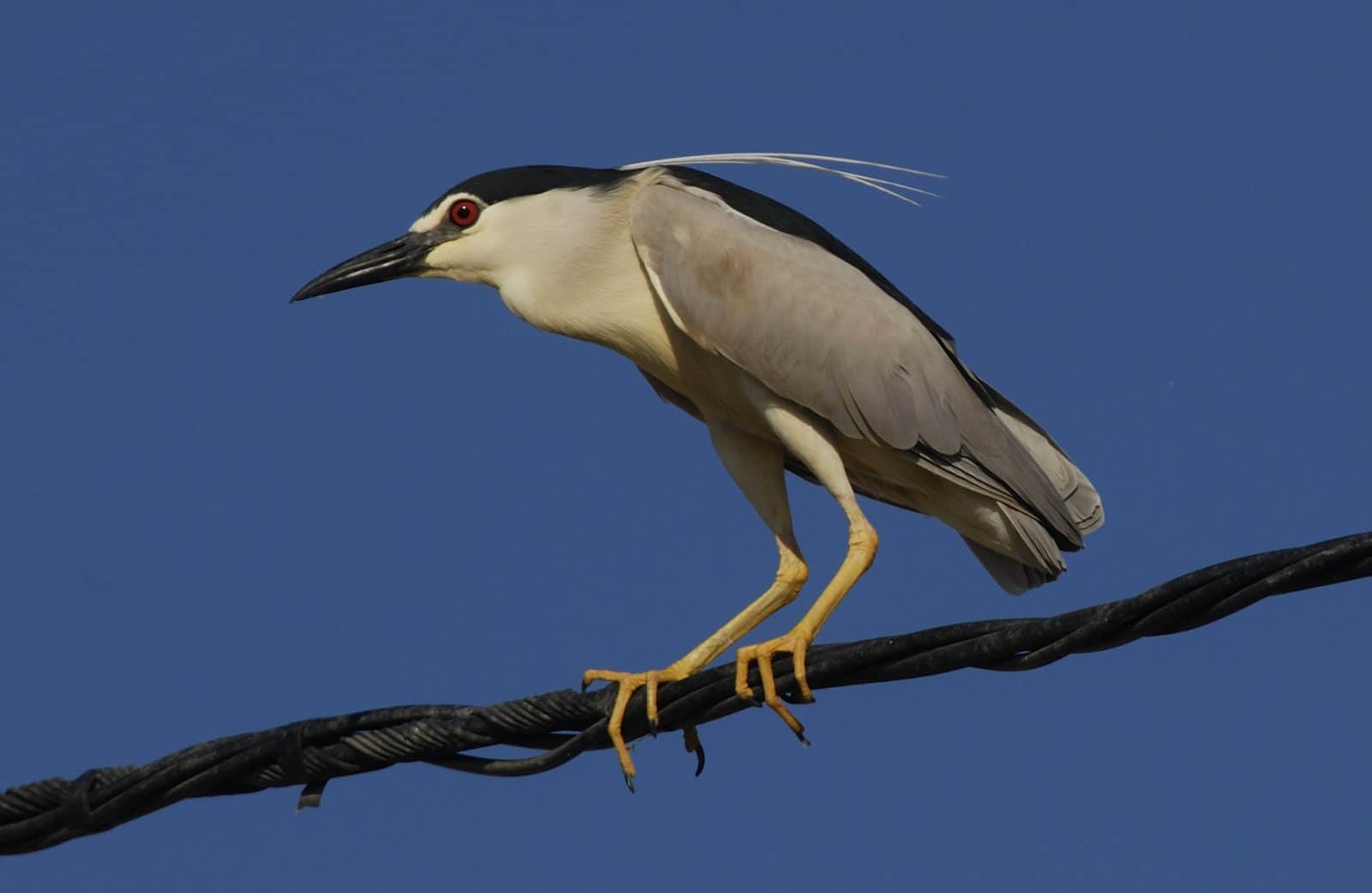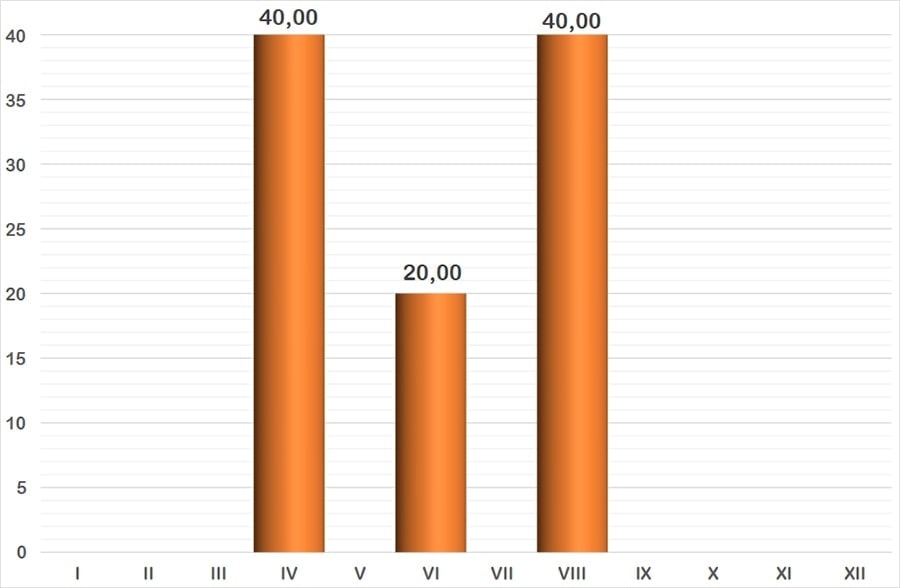It is a medium-sized heron, easily identifiable by its stocky appearance, robust black bill and its grey plumage, which on the top of the head and back is black, the face contrasts by its almost white in colour. The legs are yellow except during the mating season when they take a raspberry hue. Adults have two striking, long, white feathers on the nape. The juvenile has a characteristic mottled brown plumage, with yellow a bill and legs.

Species 1
Black-crowned Night Heron
Scientific name
Family 2
Taxonomic Affinity Group 3
Phenology 4
Until nesting colonies were established in the region, this was a bird of passage in the Salinas, and was only recorded at those times, now the adults can be observed as they move to forage for food during nesting.
In the ‘Ribera de la Algaida’ it can be seen throughout the year, although it repeats the pattern of a summer bird, period in which the sightings increase, which are more frequent in the postnuptial migratory passage.

The graph represents the probability of seeing a species during the year, grouped into months. The vertical axis indicates the percentage value. Each of the bars expresses its value. The horizontal axis represents the months: I = January, II = February, III = March, IV = April, V = May, VI = June, VII = July, VIII = August, IX = September, X = October, XI = November and XII = December.
Observation recommendations
Considered in Andalusia as a bird at lower risk, almost threatened, the existence of nesting colonies in the vicinity makes them more easily observable, increasing the number of contacts with the species.
Observation areas where we can find it
Notes
[1] The names used are from the list of birds of Spain, drawn up by SEO/BirdLife and updated to 2019 (https://seo.org/listaavesdeespana/). The reference is: Rouco, M., Copete, J. L., De Juana, E., Gil-Velasco, M., Lorenzo, J. A., Martín, M., Milá, B., Molina, B. & Santos, D. M. 2019. Checklist of the birds of Spain. 2019 edition. SEO/BirdLife. Madrid.
[2] The taxonomic family to which it belongs is indicated.
[3] Traditionally, waterbirds have been grouped according to their taxonomy or “taxonomic affinity”, i.e., when some birds coincide in certain features that allow them to be classified scientifically, but without leaving the rigour of science, they are put together in these groups so that they can be easily recognised. These groups are the following: Greves (belonging to the Podicipedae family), Herons and Similar (includes the families: Ardeidae -Herons- Ciconiidae -Storks- and Threskiornithidae -Ibises and spoonbills-), Ducks (the whole Anatidae family), Coots and Similar (the family Rallidae corresponding to Rails, Gallinules and Coots), Cranes (also with only one family, the Gruidae), Waders , a heterogeneous group, the most diverse of this classification, includes the families Burhinidae (Stone-curlews), Haematopodidae (Oystercather), Recurvirostridade (Avocets and Stilts), Glareolidae (Pranticole), Charadriidadea (Plovers), Scolapacidae and finally Gulls and Similar (the recently unified family Laridae, i.e. Gulls and Terns).
[4] Phenology studies the relationship between the cycles of living beings and meteorological factors, and in our latitude these factors manifest themselves as variations throughout the year, thus relating the seasons to the birds’ cycles (breeding, migratory journeys, etc.) The graph shows the probability of seeing a bird depending on the month. It uses data from 48 bird censuses carried out between October 2016 and September 2018. The method used is that of a census route with sampling stations, with a total count on the sheet of water.
